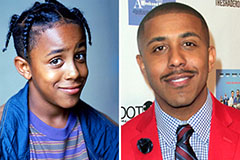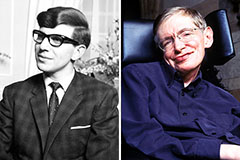The article author is making several great pointers relating to Is it safe to flush food (especially rice) down the toilet? overall in this great article down the page.

Introduction
Many individuals are typically faced with the problem of what to do with food waste, especially when it pertains to leftovers or scraps. One usual question that develops is whether it's fine to flush food down the commode. In this post, we'll delve into the reasons that people may think about flushing food, the effects of doing so, and alternate techniques for appropriate disposal.
Reasons that individuals could consider flushing food
Lack of recognition
Some people might not know the prospective harm caused by purging food down the bathroom. They may incorrectly believe that it's a safe practice.
Ease
Purging food down the toilet might look like a fast and very easy service to dealing with undesirable scraps, especially when there's no close-by trash bin available.
Laziness
Sometimes, individuals might just select to flush food out of large laziness, without considering the effects of their actions.
Consequences of flushing food down the commode
Environmental influence
Food waste that winds up in waterways can add to air pollution and injury water ecological communities. In addition, the water made use of to flush food can stress water resources.
Pipes problems
Purging food can result in clogged pipelines and drains, causing costly pipes fixings and inconveniences.
Types of food that should not be flushed
Coarse foods
Foods with coarse appearances such as celery or corn husks can get entangled in pipelines and trigger clogs.
Starchy foods
Starchy foods like pasta and rice can absorb water and swell, bring about clogs in pipes.
Oils and fats
Greasy foods like bacon or food preparation oils need to never ever be flushed down the toilet as they can solidify and trigger obstructions.
Correct disposal techniques for food waste
Using a waste disposal unit
For homes equipped with waste disposal unit, food scraps can be ground up and purged via the pipes system. However, not all foods appropriate for disposal in this manner.
Recycling
Specific food product packaging materials can be reused, minimizing waste and minimizing ecological effect.
Composting
Composting is an eco-friendly method to throw away food waste. Organic materials can be composted and made use of to improve dirt for horticulture.
The importance of proper waste administration
Minimizing ecological injury
Proper waste monitoring methods, such as composting and recycling, aid lessen pollution and preserve natural deposits for future generations.
Securing plumbing systems
By avoiding the method of flushing food down the toilet, homeowners can prevent costly plumbing repairs and keep the honesty of their plumbing systems.
Conclusion
In conclusion, while it might be alluring to flush food down the toilet for convenience, it is very important to recognize the possible consequences of this action. By embracing proper waste administration practices and taking care of food waste properly, people can contribute to much healthier pipes systems and a cleaner setting for all.
FLUSH FOOD DOWN THE TOILET?
FLUSHING FOOD CAN CAUSE BLOCKED DRAINS IN YOUR HOME
All of the plumbing fixtures in your home are connected to the same sewer pipe outside of your home. This outdoor sewer pipe is responsible for transporting all the wastewater from your home to the Council sewer mains. Even small pieces of food that go down the kitchen sink can cause problems for your sewer. It should therefore be obvious that flushing larger bits of food, such as meat, risks a clog in either the toilet itself or the sewer pipes. Flushing greasy food is even more problematic because oil coagulates when it cools, coating the interior lining of your pipes.
THE TOILET IS NOT A BIN
Food isn’t the only thing that people shouldn’t be flushing down the toilet. People use the toilet to dispose of all kinds of things such as tampons, makeup wipes, dental floss, kitty litter and even underwear. Water goes to great lengths to educate residents about the high costs and stress placed on wastewater treatment systems simply from people flushing the wrong stuff down the toilet. It costs taxpayers millions of dollars each year, and homeowners thousands in blocked drain repairs.
FLUSHING FOOD IS A WASTE OF WATER
Flushing food is a waste of our most precious resource - water. In June this year Level 1 water restrictions were introduced to protect water supply from drought conditions. Much of New South Wales continues to be affected by prolonged drought with recent figures revealing up to 97 per cent of the state remains in drought. Depending on whether you have a single or dual flush toilet, every single flush uses between five and 11 litres of water. In the current climate this is a huge amount of water to be wasting on flushing food that should be placed in the bin (or better yet, the compost).
https://www.jabplumbingsolutions.com.au/blog/can-you-flush-food-down-the-toilet

As a passionate person who reads on Is it safe to flush food (especially rice) down the toilet?, I was thinking sharing that piece of writing was a smart idea. Sharing is nice. Who knows, you may be doing someone a favor. Thanks a lot for going through it.
Schedule A Service
 Shaun Weiss Then & Now!
Shaun Weiss Then & Now! Marques Houston Then & Now!
Marques Houston Then & Now! Phoebe Cates Then & Now!
Phoebe Cates Then & Now! Stephen Hawking Then & Now!
Stephen Hawking Then & Now! Peter Billingsley Then & Now!
Peter Billingsley Then & Now!